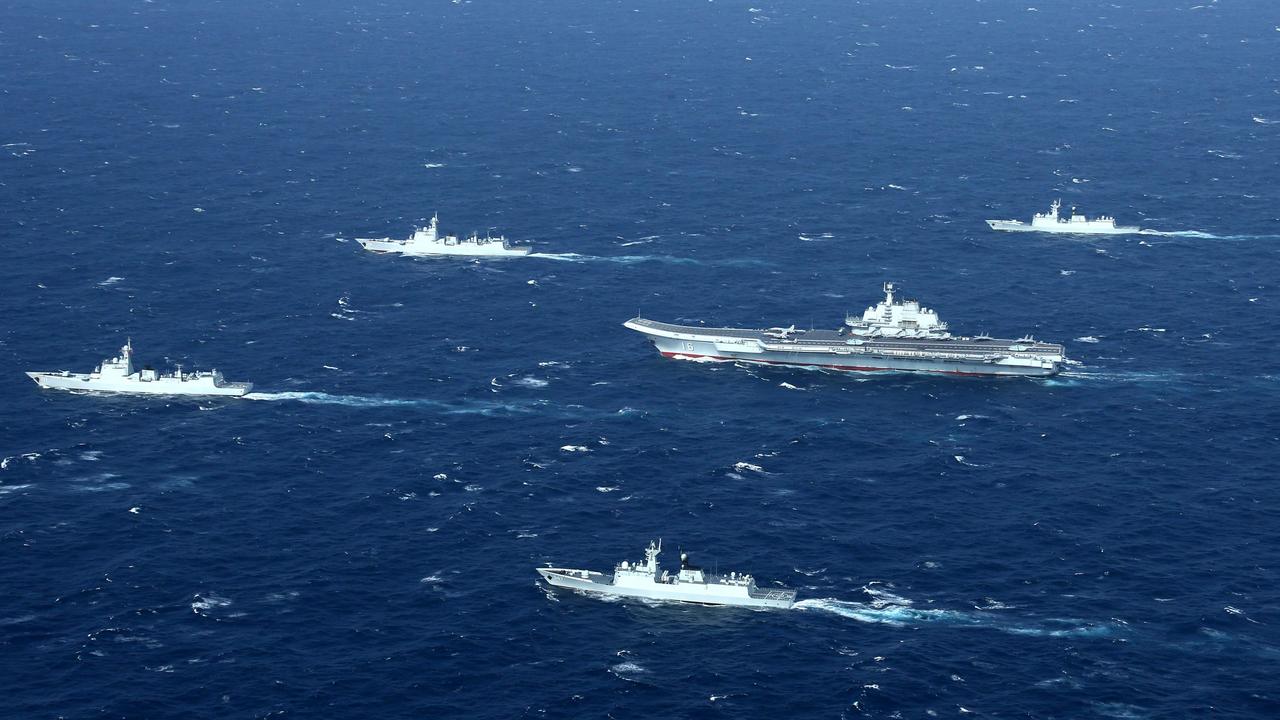European countries send warships to South China Sea in Beijing pushback
The UK, France and Germany are signalling their opposition to China’s intimidation in the South China Sea.

European nations are sending warships into the Pacific as suspicion grows over Beijing’s motives for building the world’s largest navy.
At this week’s Two Sessions national assembly of the Chinese Communist Party, Chairman Xi Jinping reasserted his desire to built a world-beating fleet.
“Our country’s current security situation is largely unstable and uncertain,” Xi told the assembled delegates. Defence Minister General Wei Fenghe added to the drumbeat, declaring China had “entered a high-risk phase”.
Which may be a response to Europe suddenly reviving its interest in the Indo-Pacific.
“European countries have been active recently to intensify their “presence” on the South China Sea issue,” concedes the People’s Liberation Army publication China Military.
It quotes China Institute of International Studies director Cui Hongjian as saying: “They want to impose clout on China not only through economic and diplomatic means but also with something ‘visible’, such as warships, to remind Beijing that ‘we can exert security influence around you’.”
RELATED: World unites in pushback against China

MOST POWERFUL NAVY
“The task of building a powerful navy has never been as urgent as it is today,” Chairman Xi said while reviewing a large portion of his fleet in 2018.
It was big then. It’s much bigger now.
Shanghai-based naval expert Ni Lexiong said a new five-year defence plan points to Xi’s sense of crisis over international pushback.
“Xi realises that there is a big gap between the PLA and the US military,” Ni told the South China Morning Post.
“That gap might widen further if Washington reinforces its scientific and technological bans on the defence industry. The most effective way is to use China’s top-down political system to mobilise all resources across sectors to accelerate military modernisation.”
But that gap has, in actuality, all but closed.
China officially possesses the world’s largest navy, with some 360 ships in active service. By 2035, Xi wants 40 major combatants afloat.
The United States is struggling to field 300.
RELATED: Danger lurking on Australia’s doorstep

“Already commanding the world’s largest naval force, the People’s Republic of China is building modern surface combatants, submarines, aircraft carriers, fighter jets, amphibious assault ships, ballistic nuclear missile submarines, large coast guard cutters, and polar icebreakers at alarming speed,” warns the US Pentagon’s recent Advantage at Sea report.
Which has prompted international military analysts to ask: What is it for?
“They have been very aggressive in the region,” US Defence Secretary Lloyd Austin said on Monday. “In some cases, they have been coercive. And some of that coercion has been directed against our allies. And our allies are very important to us.”
TROUBLED WATERS
“The dispatch of warships by the UK, France and Germany to the Indo-Pacific could draw a backlash from China and create new tension. But its positive effects – in terms of deterring Chinese adventurism in the Taiwan Strait and the South China Sea – arguably outweigh its negative ones,” writes Japanese international security commentator Hiroyuki Akita. “This would set a higher bar for a Chinese decision on military action.”
With diplomatic efforts meeting a wolf-warrior response, international forums gagged, and trade used as a coercive cudgel, Europe is reacting with growing alarm at China’s aggressiveness.
Hong Kong’s suppression is a stark demonstration of the Chinese Communist Party’s (CCP’s) authoritarian rule. There is growing evidence of forced detention, sterilisation and resettlement among the ethnic Uighur population of Xinjiang. And similar campaigns appear to be underway in Mongolia and occupied Tibet.
And that’s before the constant military pressure on its Himalayan and East and South China Seas borders are taken into account.
In December last year, NATO for the first time issued a report putting China on an equal threat footing as Russia.
France has led the way since in signalling its renewed interest in the “Far East”. This is not unexpected. The old colonial empire still has territories in the Indian and Pacific Oceans. It maintains military facilities on Reunion Island, New Caledonia and French Polynesia.
Britain has announced its new aircraft carrier Queen Elizabeth will spearhead a multinational task force in its first active deployment later this year. This small fleet is expected to conduct exercises in the South China Sea.
RELATED: China’s dangerous move in ‘secret’ sea

And the United States has publicly praised Germany’s decision to send a frigate through the South China Sea to Japan in August. “We welcome Germany’s support for a rules-based international order in the Indo-Pacific,” a US State Department release reads. “The international community has a vital stake in the preservation of an open maritime order.”
GUNBOAT DIPLOMACY
A handful of warships will, on their own, appear insignificant to Beijing.
The point is, they’re not alone.
The UK, France, Germany and The Netherlands are signalling their willingness to at least show their flags in opposition to China’s regional intimidation.
Their ships are mostly modern. They are capable. They are designed to operate seamlessly with US and other Western navies. And their crews regularly train with each other around the globe.
This makes them ideal for providing moral and physical support for the evolving Quadrilateral Security Dialogue between India, Japan, Australia and the United States.
Meanwhile, Beijing finds itself increasingly friendless on a frosty world stage – mainly because of its own ‘wolf warrior’ diplomacy and military intimidation.
Now it must consider the cost of broad international fallout if it were to make any aggressive move.
“If China takes military action in the Indo-Pacific involving the US, for instance in the Taiwan Strait, Europe is unlikely just to watch and do nothing,” Dr Nicolas Regaud of France’s Institute for Strategic Research told The Nikkei.
“Doing so, they would accept to pay a price, as China will retaliate in weaponising trade, finance, cyberspace, etc. Militarily, France, Britain and Germany may fill in the gap left by the US Navy in the Atlantic, the Mediterranean or the Gulf,” he said.
Jamie Seidel is a freelance writer | @JamieSeidel




